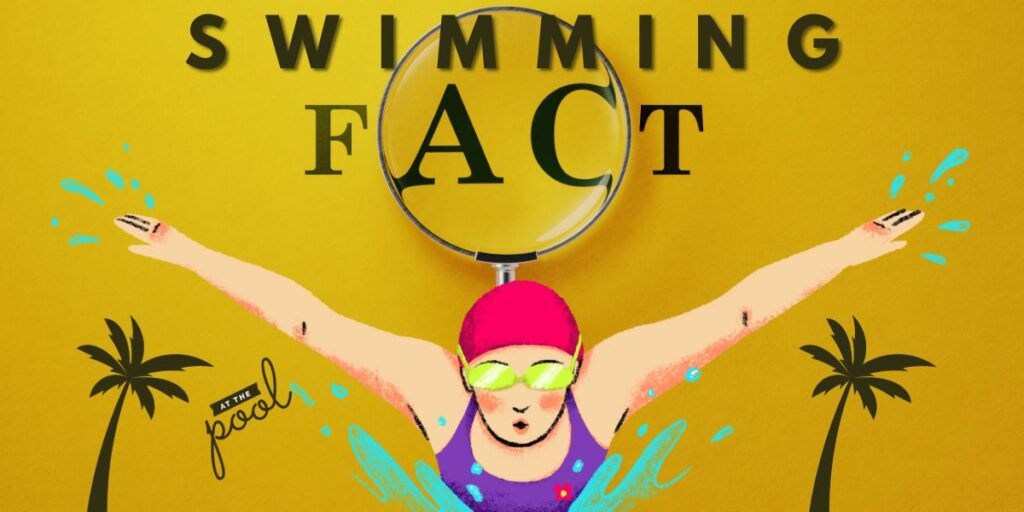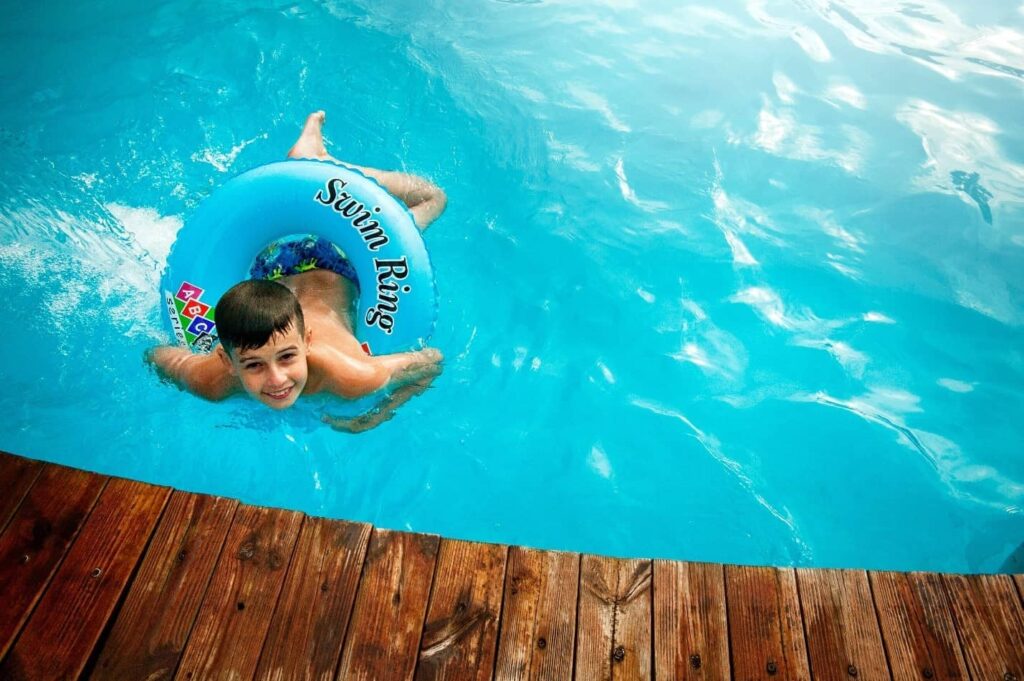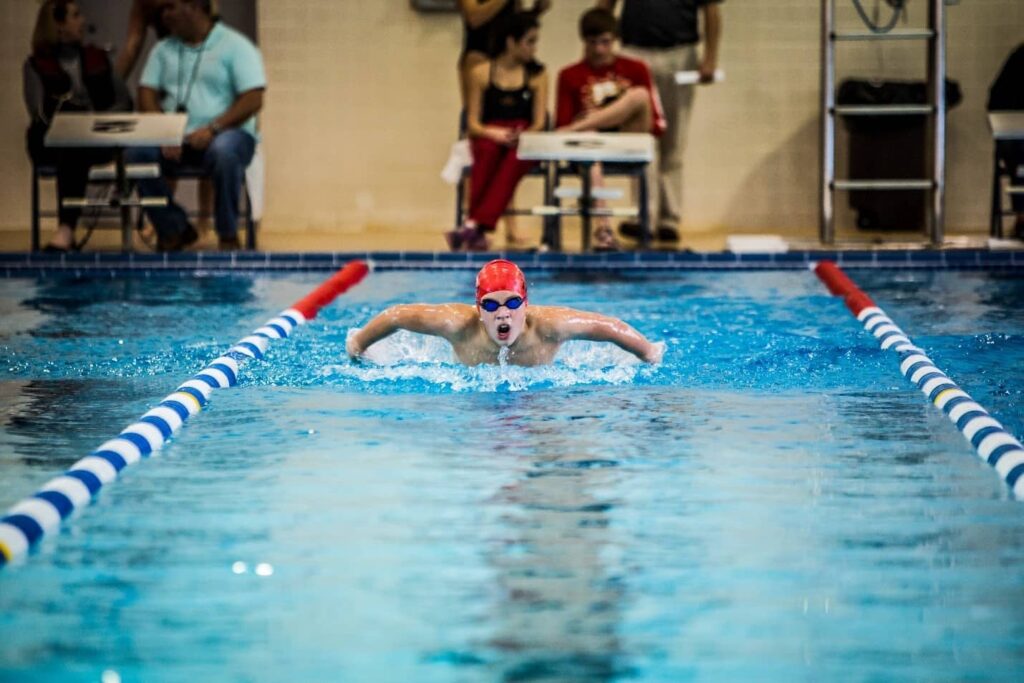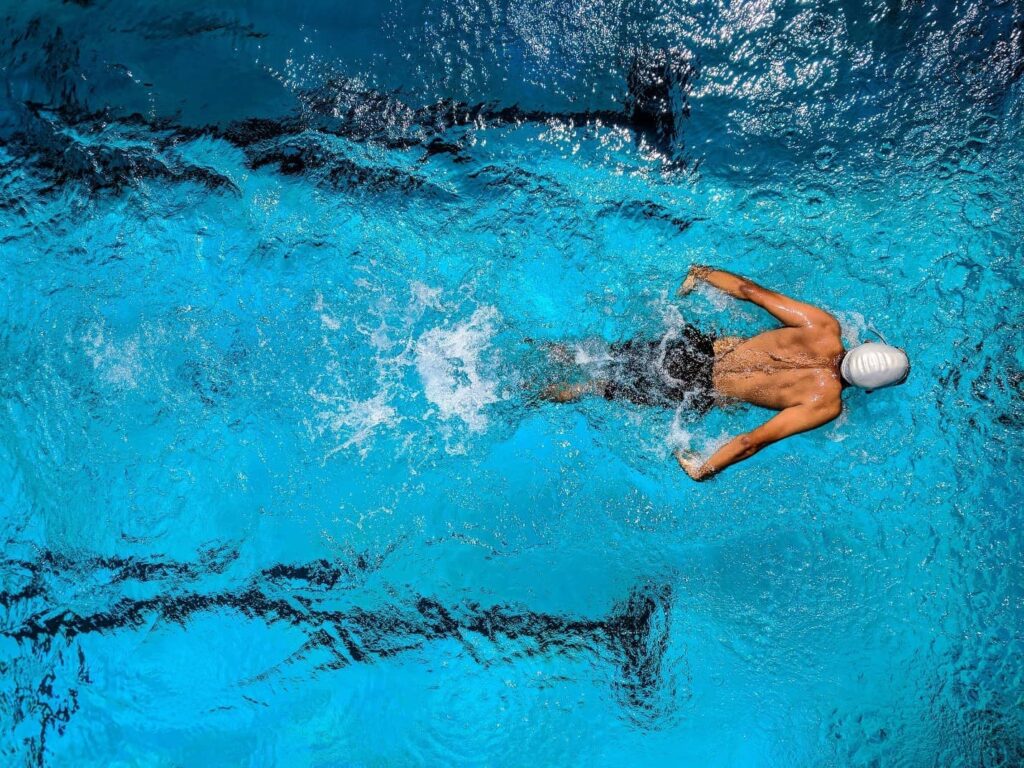Fascinating Facts About Swimming in 2023 | From the Pool to the Ocean
Swimming is one of the most popular and intense sports globally, and its popularity doesn’t seem to be waning anytime soon. There are many reasons that people love swimming so much: it’s a great form of exercise, it’s low impact on joints and muscles, and it can be done by people who struggle with other types of physical activity because there is no impact involved.

Here’s an interesting fact you might not know: The longest world record distance swum underwater was 150 m by Herbert Nitsch in 2005 when he crossed the Danube River during its annual lowest-level sturgeon migration to spawn. He did not wear fins or a mask and used no breathing apparatus.
Want to know more exciting facts?
In this blog post, we will explore some interesting facts regarding swimming for kids, adults, competitive swimmers — and everybody in between!
Dive into Wellness: Discovering the Benefits of Swimming for Your Health
Several facts are well worth knowing.
- Swimming is an aerobic exercise as it uses up oxygen in the body, and this has a beneficial effect on your heart health which can reduce early death rates.
- Triathletes, even without access to a pool, can gain similar cardiovascular benefits to swimmers. Engaging in activities that enhance blood flow and cardiovascular health, such as cycling or using a rowing machine, can be effective alternatives.
- Professional Swimmers may be less likely to develop coronary artery disease than non-swimmers because of the increased blood flow while they swim.
- For people who have pulmonary hypertension or high blood pressure in their lungs, swimming is often recommended by doctors for both daily activities and exercise routines since it does not put any extra strain on the respiratory system or cause coughing episodes like running might do.
Aside from these expected benefits, there are many other reasons why you should consider adding some swimming pool time to your routine, such as shoulder pain relief.
Interesting Swimming Facts Geared Towards Kids
An interesting swimming fact for kids is that a swimmer’s speed can be measured in meters per second.

An Australian swimmer found that elite male professional swimmers were about four times faster than females at sprinting. Still, there was not much of a difference between males and females for endurance swimming.
The typical Olympic-sized swimming pools are 50m long, with each lane being 25m. This means it takes one minute to make up these lengths, equating to 30 laps or 1800 seconds (three minutes). If individuals complete their first lap in two minutes, they will only need six more laps before crossing the finish line!
How OLD is Swimming?
Swimming is nearly 10,000 years old. The origin of swimming goes back to around 2500 BCE in Egypt. However, the first swimming world championship was held in Australia in 1846.
Insights for a Safe Ocean Swimming Experience
- The first is that people should not swim alone, no matter how great a swimmer they are.
- The second fact about swimmers in the sea is that one should take precautions against jellyfish stings by wearing protective clothing.
- Moreover, you should be aware of the waves.
- Also, do not go too far in the ocean.
Ocean Liners: Ocean liners have a rich history of traveling across the seas, providing luxurious accommodations and transport to passengers. These massive vessels are known for their opulence and grandeur. One interesting fact is that the RMS Titanic, one of the most famous ocean liners in history, tragically sank on its maiden voyage in 1912. Ocean liners have been a significant part of maritime history.
Swimming Facts in the Olympics
Swimming is one of the oldest and most competitive sports, and it has been in every Olympiad. It has a rich history that goes back to ancient Greece, Rome, Egypt, and China.

Here are some of the facts about the Olympics:
- Competitive swimming in the Olympic games started in 1896.
- Swimmers are not allowed to wear any of the following: watches, jewelry, heart rate monitors, or anything attached to them like hair ties and goggles.
- The olympic swim team does not usually get their lane for practice, and some swim in lanes with other swimmers, which is called a “fast” lane because it has faster currents than slower ones during competitions.
- The first modern Olympic sport was held in Athens, Greece, and consisted only of 15 sports events, but now there are more than 300 different types, including swimming events such as 100m freestyle swimming races.
- There have been many famous female athletes who competed at the Olympic pool over the years – one example is Anita Lonsbrough from Great Britain.
Here’s an interesting fact you might not know: In the world of competitive swimming, young talents have made remarkable strides. One notable example is Taylor Knibb, a young swimmer who, at the age of 23, achieved the 2021 World Triathlon Championship Series (WTCS). This remarkable feat is a testament to the incredible potential that the youngest swimmer brings to the sport.
Competitive Swimming Facts
Here are some of the competitive swimming facts:
- Swimming has been a contested sport since the Ancient Olympic Games.
- Swimming is one of the best full-body workouts because it works out your entire upper and lower body, as well as your core.
- The average breaststroke swimmer travels around 52 feet per cycle, totaling 120 feet for one length in an international outdoor swimming pool (25 meters). This equals two lengths on either side of their lane or four lengths in total per lap. In comparison, freestyle swimmers only need 25 yards (four cycles) to complete 100 yards (.91 miles), so they are much faster than other freestyle strokes when covering longer distances.
- The fastest competitive swimmer can cover a distance of 22 yards in just one second!
- If you’re not used to swimming, it may be challenging to get up and out since the water’s buoyancy will keep your body from feeling heavy.
- Competitive swimmers swim at least 6 miles every day.
- Swimmers can burn anywhere between 500-800 calories an hour or more, depending on how hard they work. Depending on what you have for breakfast, lunch, dinner, etc., this could cover all or some of the things that you need for a day with just one body workout if done right.
Therefore, swimming is beneficial because it burns calories without any extra work required like running would need (because running does not use as many muscles).
Fun Facts!
There are several fun facts about swimming and swimming pools that many people do not know.
- Did you know that an outdoor swimming pool can get dirty in just six hours? Therefore, you need to be aware of where you go swimming.
- You might not believe it, but swimmers sweat in the swimming pool.
- Your eyes don’t sting due to chlorine. It’s the chlorine mixed with pee and sweat that irritates your eyes.
- Another fun fact about swimming is that the human body can only hold about one-tenth of an ounce in weightlessness.
- An indoor swimming pool provides a unique swimming experience, shielded from the elements and available year-round. These pools are not only excellent for exercise but also for relaxation and enjoyment, regardless of the weather outside.
- Aside from these expected benefits, there are many other reasons why you should consider adding some indoor pool time to your routine, such as pain relief.
Interesting Facts about Swimming
Let’s discuss more facts!
In order to learn swim lessons, mastering breath-holding techniques is crucial. We need oxygen and water, both of which are essential for our bodies to survive underwater. Those who say that swimming should be banned because it can lead to drowning might want to rethink their opinion! Proper breath control is a fundamental skill in swimming that allows individuals to stay submerged for longer periods safely.

Here’s another interesting fact about swimmers: people with Parkinson’s disease have found relief from symptoms by taking part in regular physical therapy programs such as swimming or walking.
Swimming has many benefits, including weight loss, improved blood circulation, stress reduction, and more! Get your swim on this summertime 🙂

Eric Jordan
Writer | Triathlete
A writer by passion and a triathlete coach profession. In his free time, he swims, runs, cycles, and helps newbie athletes to achieve their goals.



